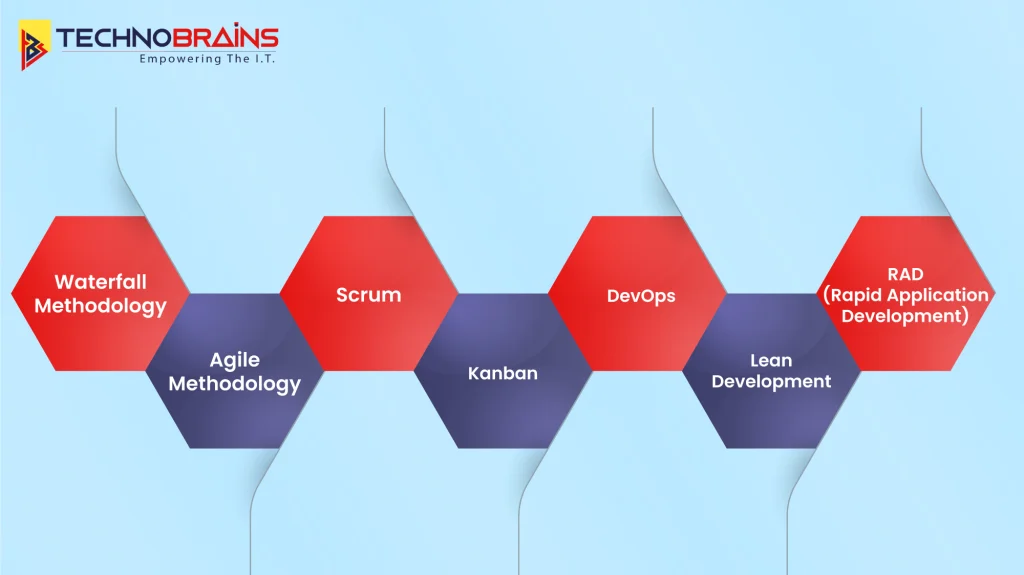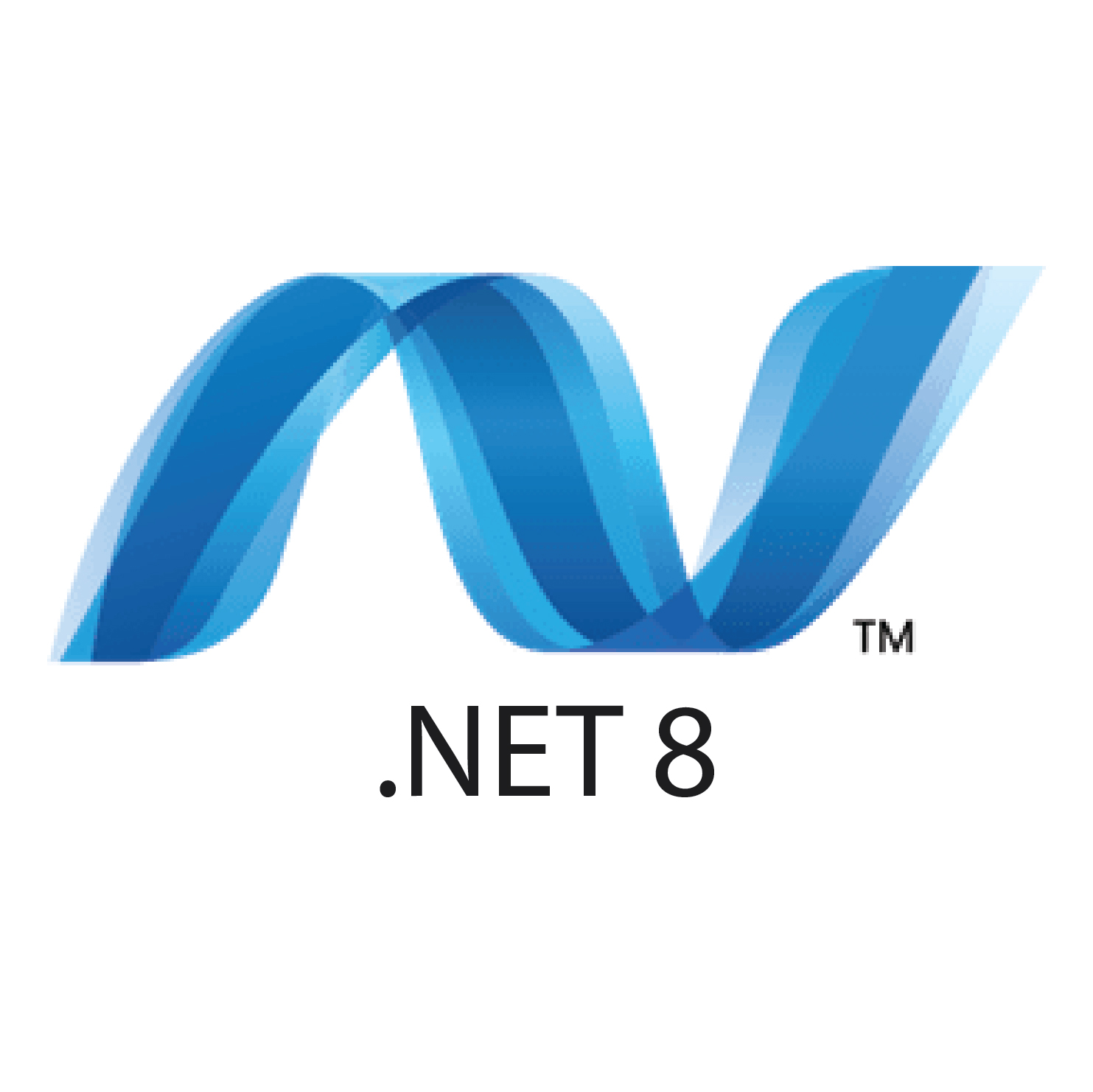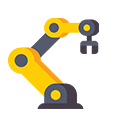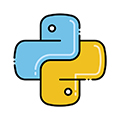Selecting the right Software Development Methodologies defines the interaction between project participants and helps manage the project and create high-quality software to achieve business goals. The advantages and disadvantages of each methodology have been discussed above to help choose the appropriate approach for the planned project.

1. Waterfall Methodology
The Waterfall model is characterized as a linear and successive model for executing phases wherein the execution of one stage occurs only after completing the previous one. Its life cycle includes requirement acquisition, analysis and designing, implementation, verification and validation, deployment, and maintenance.
When to Use Waterfall Methodology:
- The scope is unlikely to alter once the team establishes it for initiatives where it is essential.
- If documents are essential to an industry’s ability, especially in the financial or health sectors.
Pros:
- Straightforward to handle due to well-organized structure.
- Works well for projects with fixed requirements.
Cons:
- It does not allow for change once a phase sets or accomplishes.
- Can be costly and time-consuming if issues arise in later stages.
Read Also, A Complete Guide to Healthcare ERP Systems
2. Agile Methodology
The Agile methodology is a widely used software process methodology based on the iterative model. Also, it encourages cooperation, adaptability, and customer involvement. It is a fragmented development method offered in phases known as sprints, which enable changes to be made with relative ease.
When to Use Agile Methodology:
- When deciding on the structure of work assignments associated with the need for constant changes.
- When speedy product delivery and customer feedback are the most important project criteria.
Pros:
- Highly adaptable to change.
- Encourages teamwork and customer feedback.
Cons:
- It may open up many areas of concern, which can dilute or expand the project scope if not well controlled.
- It entails fast development cycles that experienced teams manage better.
3. Scrum
As we have learned, scrum is a framework within which work is structured into time-box periods called sprints, which usually fall between two weeks to one month. Daily/short meetings are constructed using scrum, product reviews, and retrospectives.
When to Use Scrum:
- In teams that involve individuals from different departments, lots of interaction is needed.
- Works well for development initiation that is frequently revised and for projects that need fast undertaking.
Pros:
- Ensures continuous improvement and adaptability.
- Encourages regular communication and transparency.
Cons:
- Requires an experienced Scrum Master for proper implementation.
- It is not ideal for projects with rigid requirements.
4. Kanban
Kanban is one of the Agile methodologies for software development based on the board with the To-Do, in progress, and Done columns. Therefore, it provides how a team deals with the to-do list of projects while being versatile.
When to Use Kanban:
- When coping with a scenario that involves steady delivery of tasks.
- It works well for teams that prefer clear, real-time task tracking.
Pros:
- Improves task management with real-time tracking.
- Reduces bottlenecks in software development.
Cons:
- Not ideal for complex, structured projects that require detailed planning.
- Requires strong team discipline to maintain workflow consistency.
5. DevOps
DevOps is a methodology that combines development (Dev) and operational (Ops) practices to enhance software development methods in terms of speed, dependability, and output. It includes automation CI/CD to ensure the product delivery is smooth and within the production process.
When to Use DevOps:
- This is best if you frequently need to update cloud-based programs for your tasks.
- Preferred by the teams in the business that aims at automating its processes.
Pros:
- Faster software delivery through automation.
- Improves collaboration between developers and IT teams.
Cons:
- Requires a cultural shift and strong collaboration.
- The use of the traditional implementation in an organization can be challenging.
6. Lean Development
Maximizing customer pleasure, maximizing resource utilization, and minimizing waste are the three concepts of lean development that resonate the most. Indeed, it does because it is based on lean manufacturing principles, embracing customer feedback and building on it incrementally.
When to Use Lean:
- Most managers need to ensure low costs when using resources to complete tasks on time.
- It is most suitable when a startup or a company aims to deliver its goods or services as soon as possible.
Pros:
- Reduces unnecessary processes and costs.
- Increases efficiency in software development.
Cons:
- It thus requires a lot of discipline so that one does not overdo it and end up getting poor results.
- It may have limited usefulness in long-term enterprise solutions.
7. RAD (Rapid Application Development)
RAD is a fast-paced methodology in software development that emphasizes the use of prototypes and small iteration cycles. It requires frequent user feedback to improve the software’s development cycle and a qualitative output.
When to Use RAD:
- Regarding design of the prototypes and MVPs (Minimum Viable Products).
- Most suitable for projects that need consistent enhancements in their delivery times.
Pros:
- Quick releases due to frequent iterations.
- Encourages user involvement for better software outcomes.
Cons:
- Not suitable for large-scale, complex projects.
- Only provide it to teams of skilled developers to maintain fast development of cycles.
Read also, Top 10 Technology Trends to Watch in 2025
Conclusion
Explaining different top software development methodologies helps in deciding on the project. One could follow the proper methods for effective implementation regardless of structure, flexibility, better time management, or risk factors. Whether you are doing custom software integration, maintaining Agile techniques, or being associated with fast-paced DevOps, the right decision can expedite your software development.
TechnoBrains – Need expert guidance Don’t hesitate to contact us for professional software services today.








